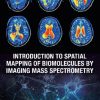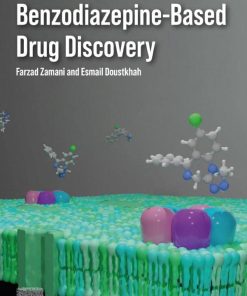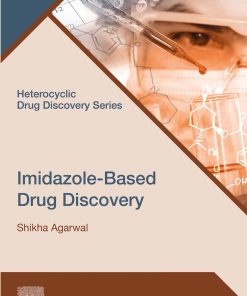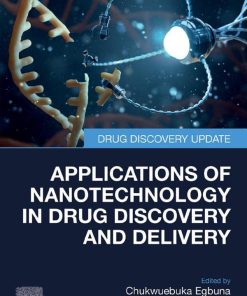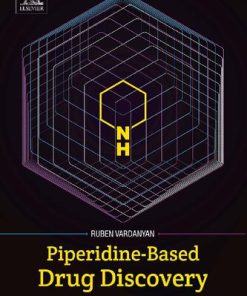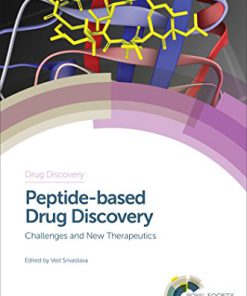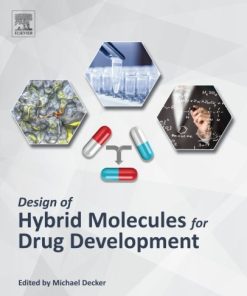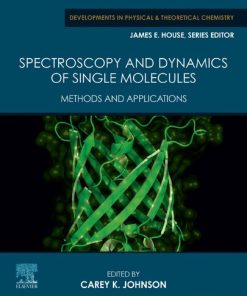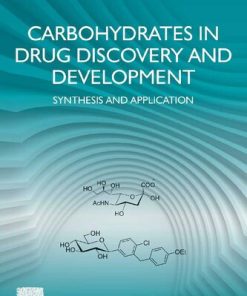Small Molecule Drug Discovery Molecules and 1st Edition by Andrea Trabocchi 0128183500 9780128183502
$50.00 Original price was: $50.00.$25.00Current price is: $25.00.
Small Molecule Drug Discovery: Methods, Molecules and Applications 1st Edition by Andrea Trabocchi – Ebook PDF Instant Download/DeliveryISBN: 0128183500 9780128183502
Full download Small Molecule Drug Discovery: Methods, Molecules and Applications 1st Edition after payment.
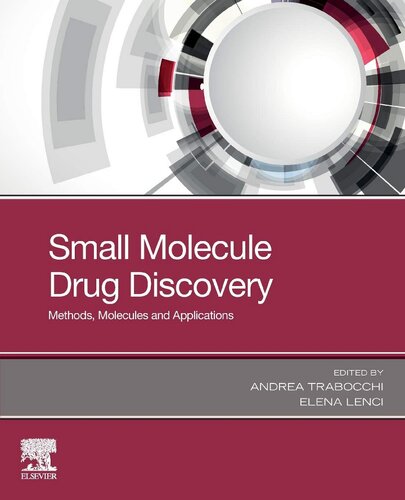
Product details:
ISBN-10 : 0128183500
ISBN-13 : 9780128183502
Author : Andrea Trabocchi
Small Molecule Drug Discovery: Methods, Molecules and Applications presents the methods used to identify bioactive small molecules, synthetic strategies and techniques to produce novel chemical entities and small molecule libraries, chemoinformatics to characterize and enumerate chemical libraries, and screening methods, including biophysical techniques, virtual screening and phenotypic screening. The second part of the book gives an overview of privileged cyclic small molecules and major classes of natural product-derived small molecules, including carbohydrate-derived compounds, peptides and peptidomimetics, and alkaloid-inspired compounds. The last section comprises an exciting collection of selected case studies on drug discovery enabled by small molecules in the fields of cancer research, CNS diseases and infectious diseases.
Small Molecule Drug Discovery: Methods, Molecules and Applications 1st Table of contents:
Chapter 1. Synthetic approaches toward small molecule libraries
1.1. Introduction
1.2. What is a small molecule?
1.3. Historical perspective
1.4. Drugs from natural products
1.5. Rational design of small molecule drugs
1.6. Combinatorial chemistry and DNA-encoded libraries
1.7. Diversity-oriented synthesis
1.8. Biology-oriented synthesis
1.9. Conclusions and future outlook
Chapter 2. Chemical reactions for building small molecules
2.1. Introduction
2.2. Cross-coupling reactions
2.3. Cycloaddition reactions
2.4. Multicomponent reactions
2.5. Photochemical processes
2.6. Late-stage functionalizations
2.7. Conclusions and outlook
Chapter 3. Chemoinformatics approaches to assess chemical diversity and complexity of small molecules
3.1. Introduction
3.2. Diversity analysis
3.3. Molecular complexity
3.4. Combining diversity and molecular complexity
3.5. Conclusions and future directions
Chapter 4. Virtual screening of small-molecule libraries
4.1. Introduction
4.2. Structure-based virtual screening
4.3. Ligand-based virtual screening
4.4. Small-molecule libraries for virtual screening
4.5. In silico validation of virtual screening
4.6. Postscreening process
4.7. Perspective
Chapter 5. Screening and biophysics in small molecule discovery
5.1. Introduction
5.2. Background and scope
5.3. Biophysical methods used in HTS
5.4. Biophysical methods used for hit validation
5.5. Structural methodologies
5.6. Case study using biophysical methods in concert to discovery small molecule stabilizers of the 14-3-3/estrogen receptor complex
Chapter 6. Principles and applications of small molecule peptidomimetics
6.1. Introduction
6.2. Definition and classification
6.3. Strategic approaches to peptidomimetic design
6.4. Peptidomimetic molecules
6.5. Secondary structure peptidomimetics
6.6. Application of peptidomimetics as protease inhibitors
6.7. Conclusion
Chapter 7. sp2-Iminosugars as chemical mimics for glycodrug design
7.1. Introduction
7.2. sp2-Iminosugars as antiproliferative and antimetastatic agents
7.3. sp2-Iminosugars in cancer immunotherapy
7.4. sp2-Iminosugars as antileishmanial candidates
7.5. sp2-Iminosugars and Inflammation
7.6. Concluding remarks
Chapter 8. Synthesis and biological properties of spiroacetal-containing small molecules
8.1. Introduction
8.2. Biological relevance of the spiroacetal moiety
8.3. Versatile synthetic methods for accessing spiroacetals
8.4. Synthesis of libraries of spiroacetal-containing small molecules
8.5. Conclusion and future directions
Chapter 9. Centrocountins—synthesis and chemical biology of nature inspired indoloquinolizines
9.1. Introduction
9.2. Synthesis of natural product-inspired Tetrahydroindolo[2,3-a]quinolizines
9.3. Phenotypic screening and discovery of centrocountins as novel mitotic inhibitors
9.4. Identification and confirmation of cellular targets of Centrocountin-1
9.5. Conclusion
Chapter 10. PPIs as therapeutic targets for anticancer drug discovery: the case study of MDM2 and BET bromodomain inhibitors
10.1. Introduction
10.2. The case study of the p53-MDM2 PPI inhibitor APG-115
10.3. Development of the BET bromodomain ligand I-BET762
10.4. Inhibitors of PPIs in clinical trials
10.5. Conclusion
Chapter 11. Discovery of small molecules for the treatment of Alzheimer’s disease
11.1. Introduction
11.2. Small molecules as multitargeting ligands multitarget-directed ligands
11.3. Conclusions and future directions
People also search for Small Molecule Drug Discovery: Methods, Molecules and Applications 1st:
quantum generative models for small molecule drug discovery
deep learning methods for small molecule drug discovery a survey
why small molecule drug discovery is having a moment
introduction to small molecule drug discovery and development
occurrence of natural selection in successful small molecule drug discovery
Tags:
Small Molecule,Drug Discovery,Methods,Applications,Andrea Trabocchi
You may also like…
Chemistry - Biochemistry Medicine - Pharmacology
Benzodiazepine-Based Drug Discovery Farzad 0323860109 9780323860109
Chemistry - Organic Chemistry
Imidazole-Based Drug Discovery (Heterocyclic Drug Discovery)
Technique - Nanotechnology
Relationships & Lifestyle - Health - Diseases & Disorders
Uncategorized
Medicine - Pharmacology
Chemistry
Spectroscopy and Dynamics of Single Molecules: Methods and Applications 1st Edition Carey Johnson
Science (General)



